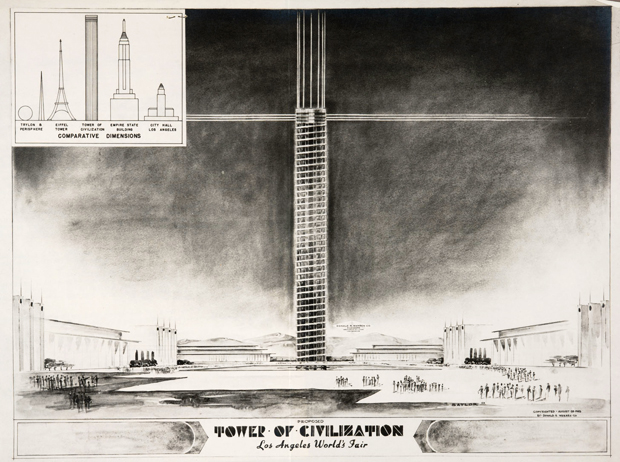
The Los Angeles that might have been
Architecture and Design Museum show exhibits unbuilt plans of Frank Lloyd Wright, John Lautner and Steven Holl
When buildings don’t get off the ground (quite literally), it’s often due to cost, local politics or occasionally both. There are myriad examples of unrealised schemes all over the world. For Londoners Daniel Libeskind’s proposed spiral extension for the V&A museum springs to mind.
{media1}
But how interesting to focus on one area, forage about for the most radical foiled schemes, and then to create a ‘what if’ version. This is what the Architecture and Design Museum, Los Angeles has done. The organisers of the show, Never Built: Los Angeles have scoured the portfolios of a host of architects to put on what is a truly fascinating look at what might have been. And their search has thrown up both some well-known and some virtually forgotten curios from big names including Frank Lloyd Wright and OMA.
{media2}
As the organisers explain, “The show looks at visionary works that had the greatest potential to reshape the city, from buildings to master plans, parks to follies and transportation proposals - any of which could have transformed both the physical reality and the collective perception of the metropolis”.
{media3}
On display in July will be Pereira and Luckman’s 1952 design for Los Angeles International Airport (LAX), complete with a terminal enclosed in glass; Frank Lloyd Wright’s 1925 proposal for a Civic Centre Plan to reconfigure the heart of the city; and OMA’s idea in 2001 to give the Los Angeles County Museum of Art (LACMA) a vast translucent lid.
{media4}
But this isn’t just an outlandish exhibition of Neverland fantasy. Through these thwarted schemes, the show’s organisers pose the question: “Why is Los Angeles a hotbed of great architects, yet so lacking in urban innovation?” Their research suggests – unsurprisingly - that much of the blame can be placed squarely at the door of the city’s institutions and infrastructure, which “have often undermined inventive, challenging urban schemes”, they believe. Check it out at the museum's website and take a leaf through our extensive range of architecture books for projects that did make it off the ground.